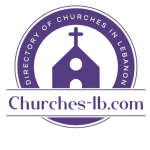Overview
Map
Other Details
كنيسة سيّدة الحارة
Zgharta
Zgharta
North
كنيسة سيّدة الحارة - زغرتا في البدء كان البناءُ جزءًا من بيتٍ كبيرٍ لوقف زغرتا، استعمله الأهالي مستودعًا لأدوات البناء عندما حاول الزغرتاويّون بناء كاتدرائيّة سنة ١٨٩٩ في المكان القائمة فيه الآن كنيسة مار يوحنّا المعمدان. ولمّا لم تتيسر الأموال لإتمام البناء، طلبت السيّدة آسة أرملة سليم بك كرم من الخوري سعاده حنا ديب سعاده أن يُستعمل هذا البيت معبدًا على اسم سيّدة الحارة، بعد الحصول على إذنٍ من البطريركيّة المارونيّة. رُممّت هذه الكنيسة مرارًا ووُسّعت وأُضيفت لها قبّة جرس. أُهملت الكنيسة بعد بناء كنيسة مار يوحنّا المعمدان المحاذية لها. أُعيد تجديدها سنة ٢٠٠٠. The church of our Lady of Hara - Zgharta The building was originally a tool basement for a house owned by the parish of Zgharta. In 1899 after the failing to build a cathedral nearby due to the lack of funds, a local lady named Assa, who is the widow of Selim Bey Karam asked Fr. Saade Hanna Dib Saade to convert the structure into a church dedicated to the Virgin Mary after the approval of the Maronite Patriarch. The church was renewed many times and a bell tower was added. However, after the construction of St John’s church nearby it fell into disuse. It was finally renewed in the year 2000.
Visited 2726 times, 2 Visits today


















Reviews are disabled, but trackbacks and pingbacks are open.